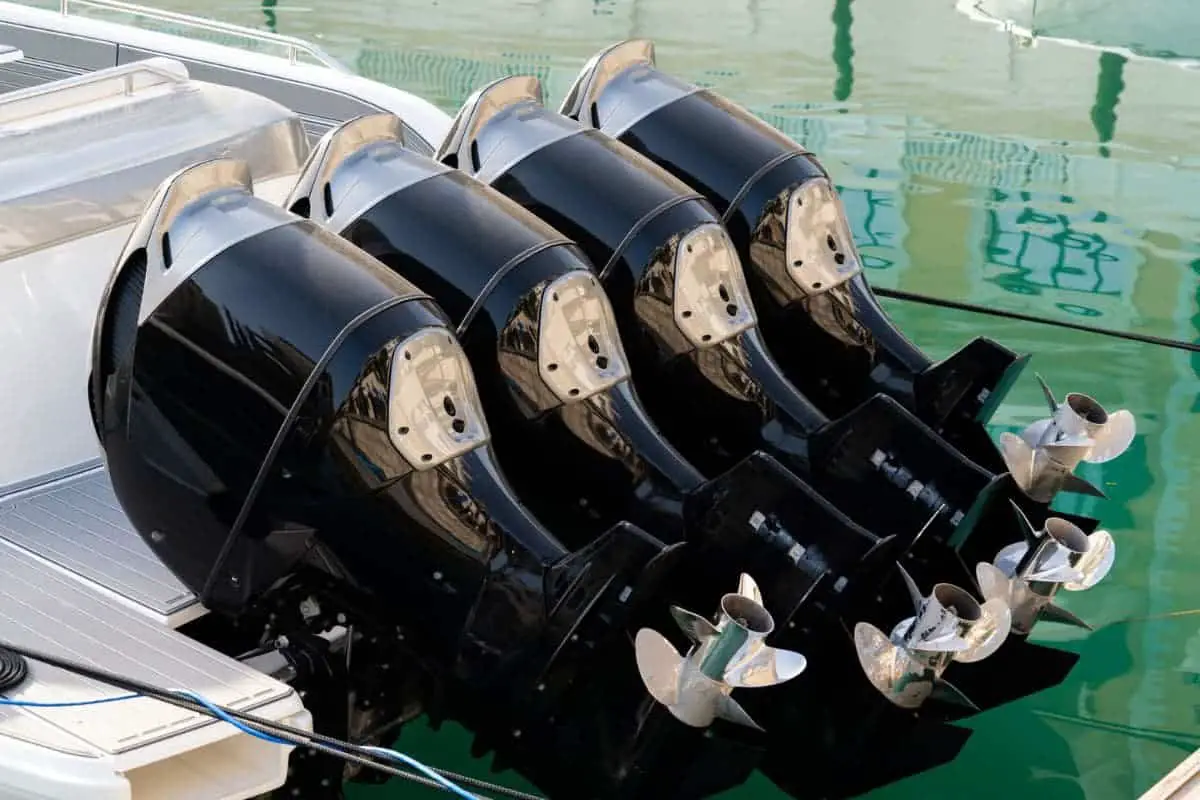Getting the correct shaft length is crucial when getting a new outboard motor. Shaft length can affect your control over your boat, and the wrong shaft length could lead to efficiency problems. But what’s the difference between a long and short shaft, and how do you choose the right one?
A long shaft is anything 15 inches (38.1 cm) or less, and a long shaft is anything over 20 inches (50.8 cm). Your boat’s engine capacity, size, type, and transom length will affect its ideal shaft length. Vessels with a lower transom will need short shaft outboards and vice versa.
In this article, I’ll guide you on determining what shaft length is ideal for your boat, how to measure transom height, and what else to consider when getting an outboard motor.
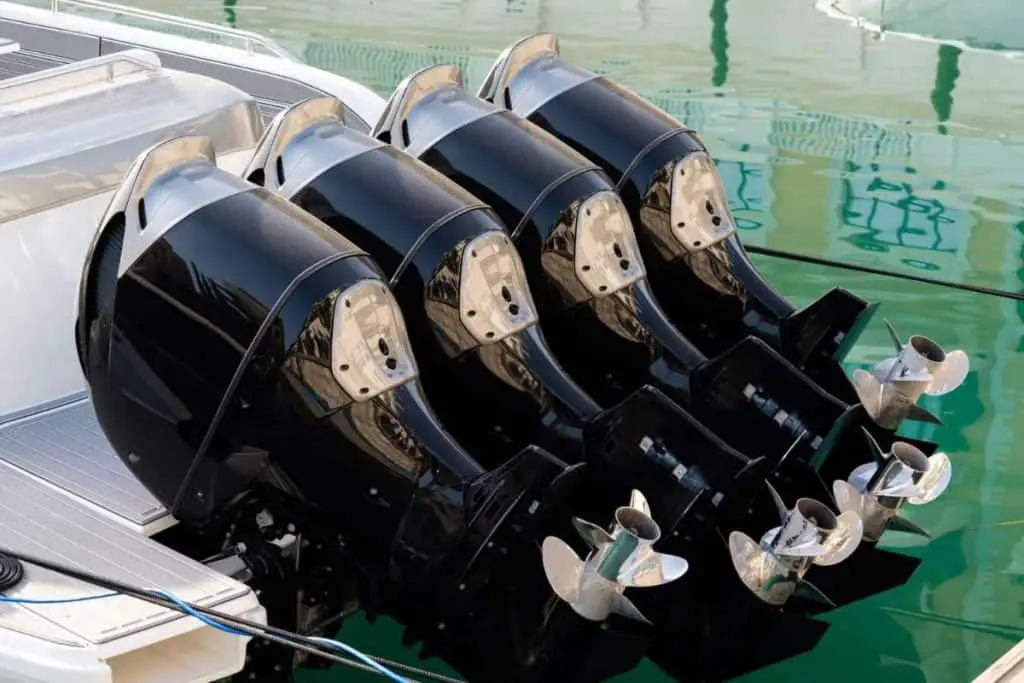
The Difference Between a Long and Short Shaft Outboard
Before looking at when to use a long vs. short outboard on your boat, let’s first look at the difference between the two. The typical long shaft outboard is around 20 inches (50.8 cm), but it can be as long as 30 inches (76.2 cm) in some boats.
Short shaft outboards are usually 15 inches (38.1 cm) or less. While they are also effective, most boats will use long shaft outboards.
The right size outboard shaft is crucial to get the most out of your outboard motor. You want the shaft length and the transom height to be almost the same so that your boat’s propeller remains submerged in the water.
Having your boat’s propeller at the perfect height will affect your steering control, especially in shallow waters. If the propeller is too low, the distance between the boat’s hull and propeller will increase, and the engine will have to generate more force to move the boat forward.
Most boats will have adjustable shaft lengths, and you could technically install a long shaft on a small shaft boat. However, since the shaft length correlates directly with the boat’s transom height and size, it’s best to follow the manufacturer’s recommendations.
Why Having the Right Shaft Outboard Length Is Important
Some boats only accommodate a single outboard shaft size. However, most boats are more flexible, and you can fit them with several types of outboard shafts. But is getting the outboard shaft height essential?
While your boat will still work if the outboard shaft length is slightly off the ideal size, it will affect your boat’s control and efficiency. Having the wrong outboard shaft length in your boat will result in these problems:
- You’ll have less control over your boat. Using a long outboard shaft on the wrong boat type can make it much harder to steer, especially if the engine doesn’t have enough horsepower. If the difference between the ideal and current shaft length is too much, it may even cause your boat to capsize.
- You’ll get less power. Long shaft outboard boats are designed for bigger engines to propel heavier boats. Using a short-shaft outboard motor on a long-shaft boat will have less engine power and efficiency. This issue can be especially problematic for sports boats, yachts, and bigger fishing vessels where engine power is crucial.
- There’s a higher risk of your boat bottoming out. Using a longer shaft on a vessel designed for a short shaft outboard motor may cause your boat to bottom out or hit rocks and other objects. This issue isn’t such a problem if you’re boating in the ocean, but it can damage your boat in shallow waters. If you bottom out by mistake or your boat runs aground, check out this guide on what to do when your boat runs aground.
- You may damage your boat. Using the wrong outboard shaft may also cause technical problems and exert more pressure on the engine, especially if your boat is specific to the outboard motor size. While going a few inches above or below the ideal shaft length isn’t a significant issue, never try using an extra-long outboard shaft on a boat designed for a small outboard motor.
So, while you have a margin for error in shaft length for outboard motors, keeping your boat’s shaft length as close as possible to its recommended size is essential.
How To Determine the Ideal Shaft Length for Your Boat
Sailors often use outboard motors on bass boats, pontoon boats, and some canoes. While they have a more flexible mounting system than inboard motors and are easier to maintain, getting their position right on the transom is crucial.
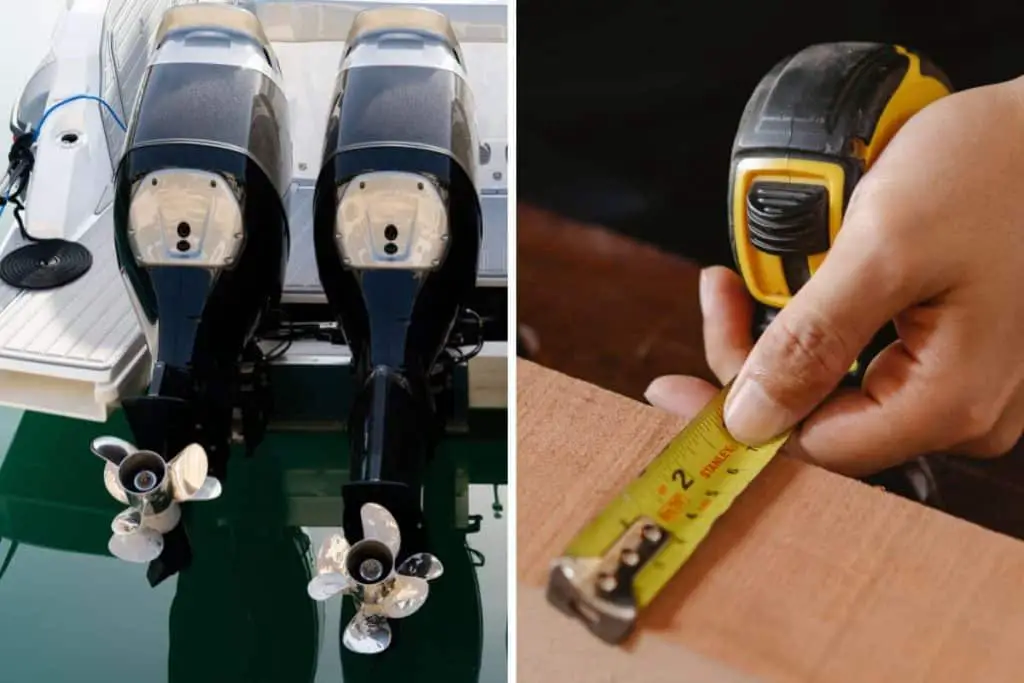
So, how do you determine what shaft length is perfect for your boat?
Here are some guidelines to keep in mind when measuring shaft length:
Measure the Transom Height
In most cases, measuring the transom height will give you the most accurate estimate of the ideal outboard shaft length. The transom height is the distance from the beginning of the clamping plate to the bottom of the hull’s center.
Some boats have their engines mounted on a bracket instead of a transom. In such boats, measure the height from the top of the brack to the transom bottom to get the equivalent transom height.
The cavitation plate should be the same as the transom height to give your engine the perfect fitting. When the cavitation plate balances with the transom height, the propeller’s height will be even.
Consider Your Boat Type
While some boats may have flexibility in the outboard shaft length, most will work with either a long or short shaft. If you aren’t sure of the exact transom height, you can look at the type of boat to determine whether a long or short shaft is ideal.
Heavier boats with bigger engines usually require a longer outboard shaft since they need more balance. Boats with smaller motors need to steer at higher speeds, which makes a shorter outboard shaft ideal since outboard engines turn completely as the boat changes direction.
Most small recreational boats will use short shaft outboards, while larger seagoing or fishing boats will use long or extra-long shaft outboards.
Look at the Water’s Condition
While the outboard motor isn’t something, you change regularly, knowing the type of water you will use it in is helpful. Boats designed for shallow waters and many freshwater boats usually have shorter transoms and won’t work well with a long outboard shaft.
If you regularly go boating in shallow waters, you can even fit longer boats with shorter shafts as long as the propeller is fully submerged.
If you go boating in the ocean or deeper lakes, you’ll have to worry less about running aground, and you can attach a longer outboard shaft to your boat.
However, the type of boat and boating conditions come secondary, and you should always consider transom height before deciding on the ideal shaft length.
Check the Boat’s Manual
Experienced boaters will often discard the manual since they already have everything at their fingertips. However, why struggle to measure transom height or guess the ideal outboard shaft length when you can check the boat’s manual?
Granted, not all manuals mention which shaft length is ideal, and some boats can adjust with multiple options, but most manuals will give you some guidelines on the shaft outboard specifications.
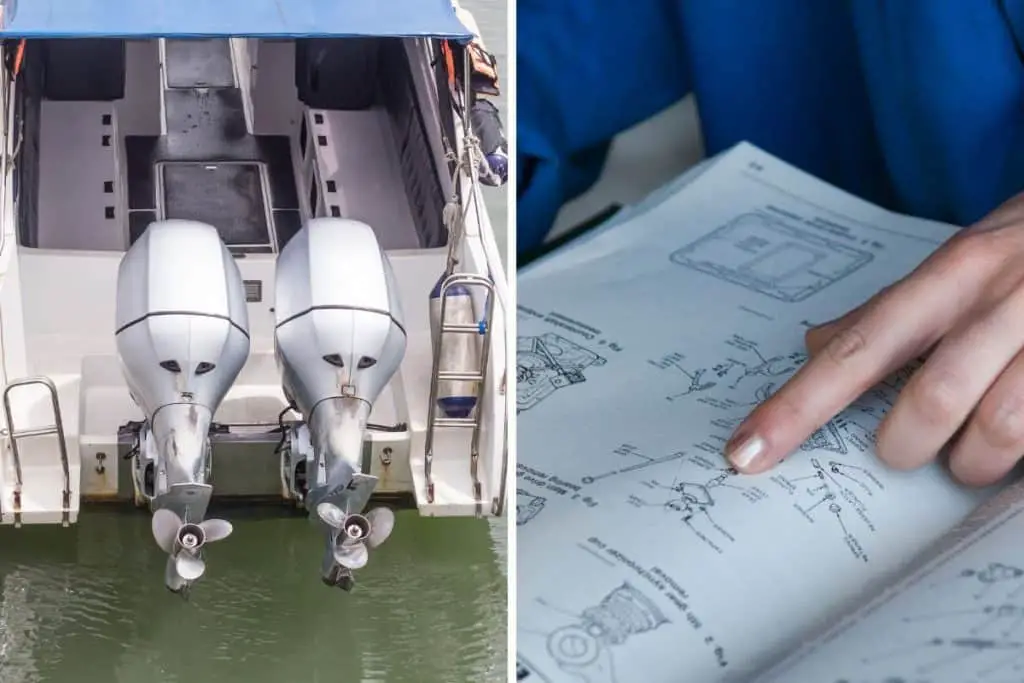
Choosing whether to follow these guidelines is up to you!
Boats That Use a Short Shaft Outboard
Smaller recreational and medium-sized freshwater boats will usually use a short outboard shaft. These boats are also more likely to maneuver at faster speeds in shallow waters, and long shafts may cause them to capsize. The general requirement for short shaft outboards is that the boat is less than 20 inches (50.8 cm) above the waterline.
Boats that use short shaft outboards include:
- Pontoon boats (many can be used with a long shaft as well)
- Small tenders
- Small inflatable boats
- Canoes
- Small sailboats
Generally, any boat that doesn’t have too much weight to maneuver and moves with more speed in shallow waters requires a shorter shaft outboard.
Boats That Use a Longer Shaft Outboard
The general guideline for longer shaft outboards is that the transom height should be at least 20 inches (50,8cm) above the waterline. Boats with more engine power and weight require longer shaft outboards for better balance. This restriction includes most fishing boats and longer sailboats.
Boats that use longer outboard shafts include:
- Larger sailboats
- Pontoon boats (depending on the boat size)
- Most sea-going craft
- Jon boats
Most of the abovementioned long shaft outboard boats will work well with a standard 20 or 25-inch (50.8 or 63.5 cm) long shaft outboard. However, bigger barges, extra-long pontoon boats, and some sailboats may require an extra-long shaft for better balance.
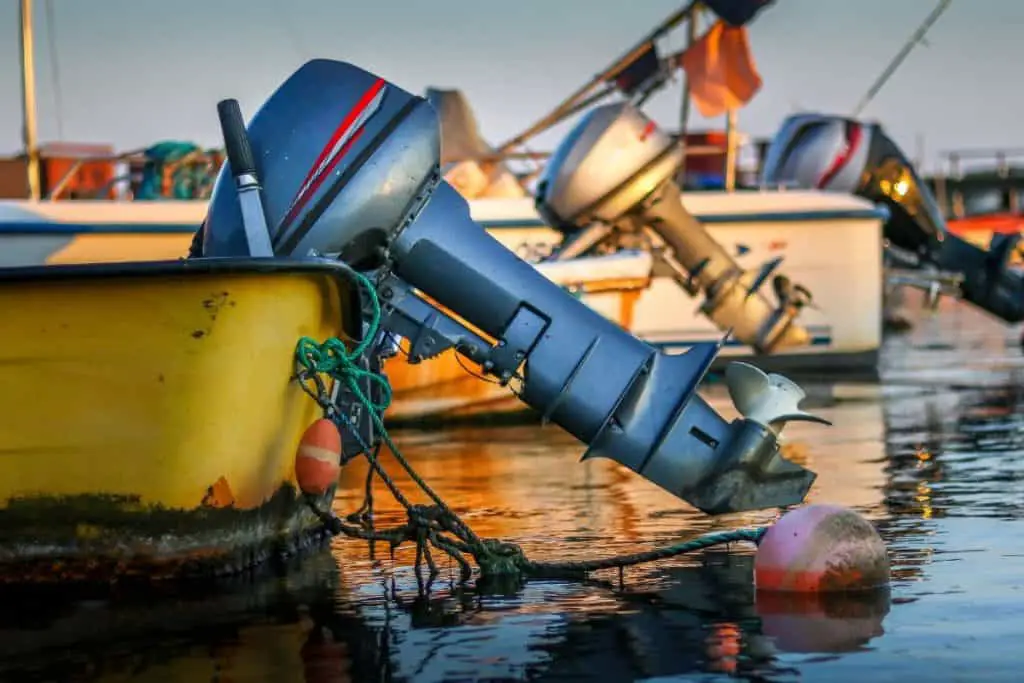
Final Thoughts
Long and short shaft outboard motors are similar in every aspect except for size. Using them interchangeably can cause problems, so you should consider the ideal shaft length for your boat before getting a new outboard engine.
If you can, measure the transom height to determine the ideal shaft length or check the boat’s manual. If not, consult an expert before making up your mind.
Project “Nice Shaft” Boating
Check out our article on: How Shallow Can My Boat Go: (Guide)

